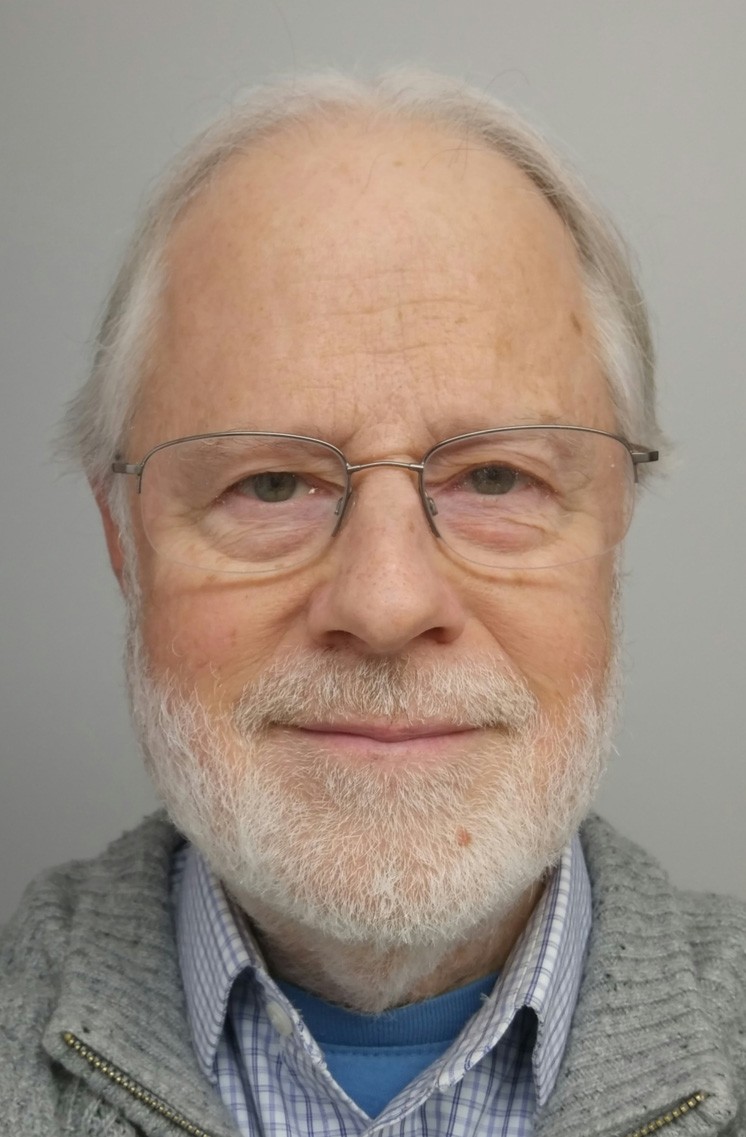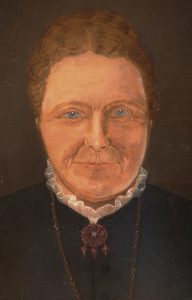My earlier discussion of genealogical uncertainty focused on uncertain genealogical connections. This discussion will explore uncertainty in biographical information about ancestors or relatives.
Years ago, when I started exploring the ancestry of my father’s great-grandmother, Hannah Maria (Salisbury) Olmsted (1829–1887), I fairly soon found an abundance of information in Richard LeBaron Bowen’s four-volume Early Rehoboth: Documented Historical Studies.[1] In particular, I learned the gruesome details of the death of my Salisbury immigrant ancestor William and his oldest son, John, brother of my ancestor Samuel Salisbury, in the contentious time at the beginning of King Philip’s War. Because of tense relations with the natives, most English colonists had left their homes and gathered in fortified garrisons. Here is the contemporary account written by John Easton, then Deputy Governor of Rhode Island, as quoted by Bowen:
In this Time[2] sum Indians fell a pilfering sum Houses yt the English had left and an old Man and a Lad going to one of these Houses did see three Indians run out thereof. The old Man bid the young Man shoot; so he did, and a Indian fell doune, but got away againe. It is reported yt sum Indians came to the Garesan, asked why they shot the Indian. Thay asked whether he was dead. The Indians said yea. English Lad saied it was no matter. The men indevered to inform them it was but an idell Lads Words but the Indians in haste went away and did not hearken to them. The next day[3] the Lad that shot the Indian, and his father, and fief Englishmen were killed so the war began with [King] Philip.[4]
The Indian shot by the young man on 23 June is considered the first fatality of King Philip’s War. Bowen then reports:
The Swansea records show that the only father and son slain at Swansea on 24 June 1675 were William Salisbury and his son John. So by simply putting together two source records, which have been readily available for two hundred and seventy-three years, we are able to state here for the first time that King Philip’s War was started by John Salisbury, a young man twenty years of age, when on the 23rd of June 1675 his father, old William Salisbury, a third rank[5] inhabitant of Swansea, ordered him to shoot one of three Indians seen running out of his own empty house which he had previously abandoned when he and his family fled to Rhode Island.
Well, not so fast, Mr. Bowen. Here is the list of nine men killed by Indians at Swansea on 24 June 1675, presented in alphabetical order:
Nehemiah Allen [or Allin]
Gershom Cobb
William Lohun [should be Cohun or Cohoun or Cahoon]
John Fall [or Full]
John Jones
Robert Jones
Joseph Lewis
John Salisbury
William Salisbury[6]
There are two father-son pairs in this list, William and John Salisbury, aged approximately 53 and 17,[7] respectively, and Robert and John Jones, aged 49 (approximately) and 22 (almost 23).[8] Bowen quotes a letter from a Boston merchant to his friend in London, written shortly after the Indian War broke out,[9] which tells that the father, mother, and son went on 23 June to fetch corn from the home that they had abandoned. This letter claims that the Indians killed not only the father and son but also the mother, but this cannot be correct, because both wives/widows/mothers are attested as alive at later dates; Susannah Salisbury returned to her former home of Dorchester by 1677, and Anne (Bibble) Jones died between 7 June 1677 and 22 September 1681.
This letter claims that the Indians killed not only the father and son but also the mother, but this cannot be correct...
The merchant’s letter gives the age of the son as “about twenty years old,” which is about as good a match for the likely age of John Salisbury (17) as for the age of John Jones (almost 23), so the Salisbury father and son are about as likely as the Jones father and son to be the ones involved in killing the looting Indian. The chance of new evidence which would tilt that balance is fairly small. (Unfortunately, many recent works follow Bowen’s attribution of the initial Indian fatality to the Salisburys.[10])
By way of contrast, in situations where there are two alternatives and one is much more likely than the other, there is a tendency for people to remember the more likely one, perhaps attaching the word “probably” to it. However, there is a good reason in such situations for also remembering the less likely alternative, namely, that you will then be in a better position to notice evidence that lends support to (or increases doubt about or even decisively disproves) the less likely alternative.
One might think that the invention of a time machine at some point in the future might enable researchers to go back to events for which the evidence is scanty and directly observe what happened. However, Stephen Hawking in his essay “Chronology Protection: Making the World Safe for Historians”[11] and in Chapter 5 of his book The Universe in a Nutshell[12] explains that time travel, while not impossible, is possible only on an extremely small scale or against extremely strong odds; there is little hope that a human can be sent back in time to observe (or alter) events.
To summarize the Jones/Salisbury situation, people who are descended from both the Joneses and the Salisburys will have to concede that, one way or the other, their relatives were involved in the start of the war. Descendants of Robert Jones but not William Salisbury can say “My family may have been involved in starting King Philip’s War, but it could have been the Salisburys,” and William Salisbury descendants (like me) can similarly say “My family may have been involved in starting King Philip’s War, but it could have been the Joneses.”
Notes
[1] Richard LeBaron Bowen, Early Rehoboth: Documented Historical Studies of Families and Events in This Plymouth Colony Township, 4 vols. (Rehoboth, Mass., 1948).
[2] A little before (as well as on) Wednesday 23 June 1675.
[3] Thursday, 24 June, declared as a fast day in view of the worsening relations between the English and the Indians.
[4] Bowen, Early Rehoboth, 3: 10.
[5] Third rank: not a character judgment but rather a taxation category.
[6] H. L. Peter Rounds, trans., Vital Records of Swansea, Massachusetts, to 1850 (Boston: NEHGS, 1992), 409, Appendix A – from Plymouth Colony Records. This information was supplied by Nicholas Tanner, Swansea town clerk, who said that these nine men were buried on 24 June. However, Benjamin Church’s Diary of King Philip’s War 1675-76, edited by Alan and Mary Simpson (Chester, Conn.: Published by the Little Compton Historical Society/Pequot Press, 1975), includes Church’s description of a march of English troops on 30 June: “They marched until they came to the narrow of the neck [Metapoiset Neck, now called Gardners Neck], at a place called Keekkamuit, where they took down the heads of eight Englishmen that were killed at the head of Metapoiset Neck and set upon poles, after the barbarous manner of the savages.” Consequently, Eugene A. Stratton doubts that the burials took place on the same day that these nine men were killed, saying (in Plymouth Colony: Its History & People, 1620-1691 [Salt Lake City: Ancestry, 1986], 120–21, note 9), “it would seem that the bodies Church saw on 30 June were of the men said to have been buried on 24 June.”
[7] Lida Haven Weir, “William Salisbury, 1612-1675, to Cynthia Salisbury, ca. 1816-1896: with 32 related families,” 1988, typewritten family history in the library at the New England Historic Genealogical Society, p. 22. (Cynthia Salisbury is the sister of my ancestor Hannah Maria Salisbury.) John’s approximate birth date of late 1657 or early 1658 is inferred from the spacing of the births of the next three children in the family.
[8] The Jones family is covered in John Insley Coddington’s article “Sybil (Tincknell) (Bibble) (Nutt) Doolittle and her Family,” The American Genealogist 31 [1955]: 96–98, and in part of Ethel Farrington Smith’s article “Seventeenth Century Hull, Massachusetts, and her People,” The New England Historical and Genealogical Register 143 [1989]: 121–24.
[9] Bowen, Early Rehoboth, 3: 10–11.
[10] For example, King Philip’s War by Eric B. Schultz and Michael J. Tougias (Woodstock, Vt.: The Countryman Press, 1999), 2, 101; the paperback version of this book was reprinted in 2017.
[11] In Hawking et al., The Future of Spacetime (New York: W. W. Norton, 2002), with an introduction by my Cornell classmate Richard Price.
[12] Stephen Hawking, The Universe in a Nutshell (New York: Bantam Books, 2001).
Share this:

About Don Stone
Don Stone is a retired computer science professor. His interest in genealogy began at the age of 13 when his mother told him that he was descended from the artist John Trumbull. Some library research quickly revealed that he was descended from the artist’s brother, but he was hooked on the subject. Don enjoys researching modern, medieval, and ancient genealogy and making large-format illustrated genealogical charts. He received a Bachelor of Engineering Physics from Cornell University and an M.S. (Computer and Information Science) and a Ph.D. (Instructional Systems) from the University of Pennsylvania.View all posts by Don Stone →
